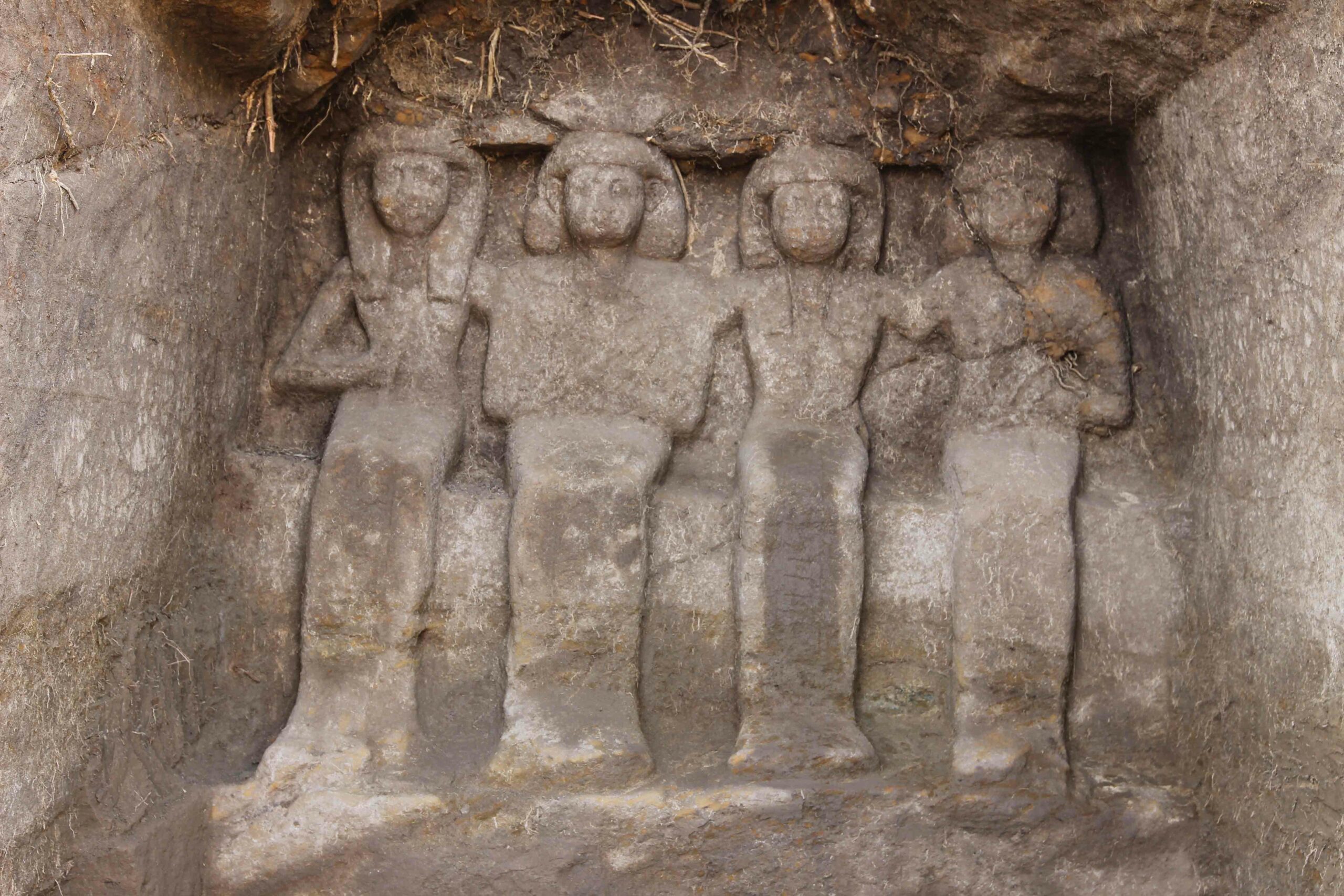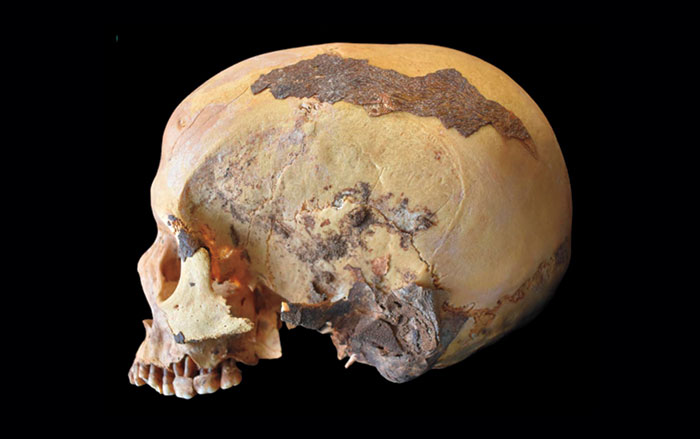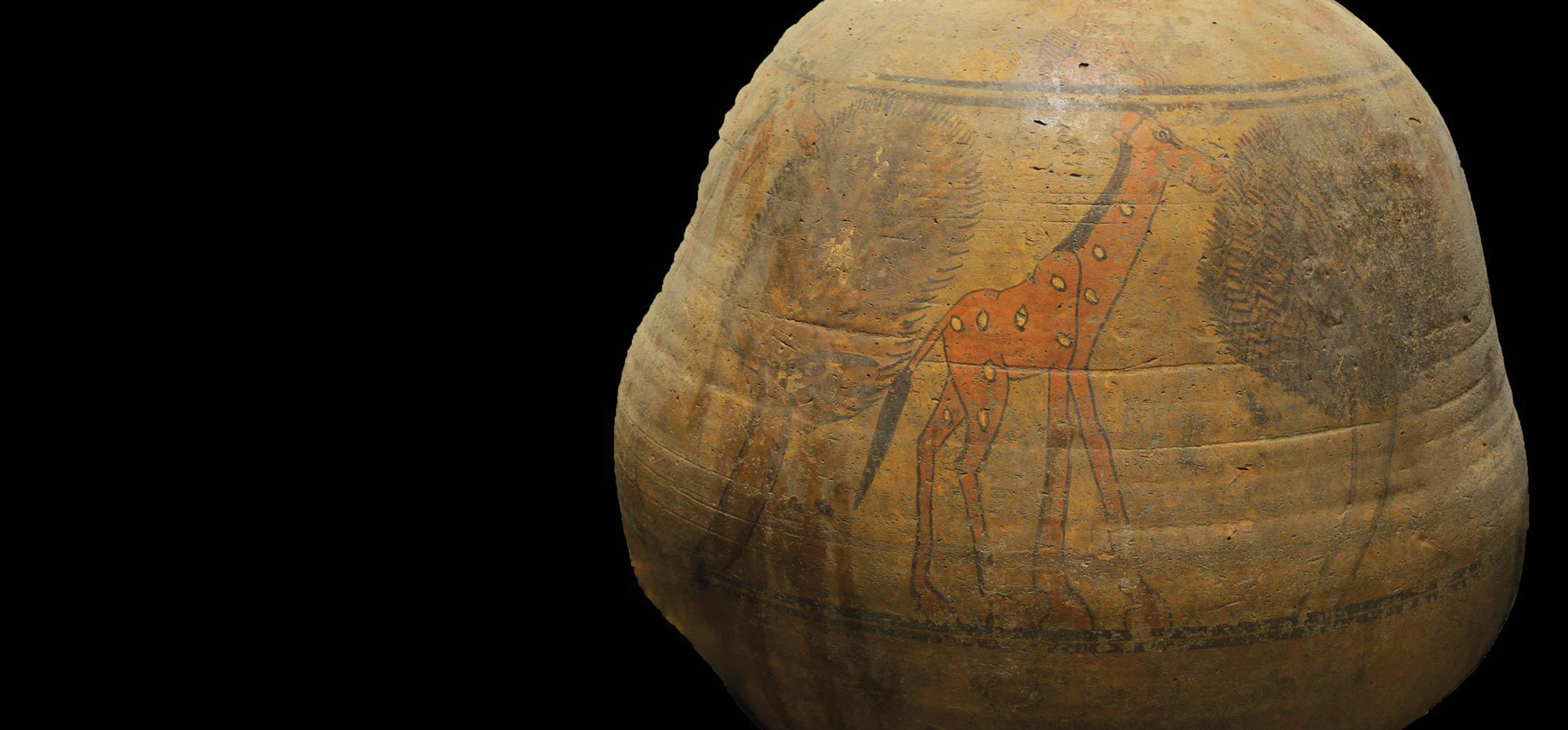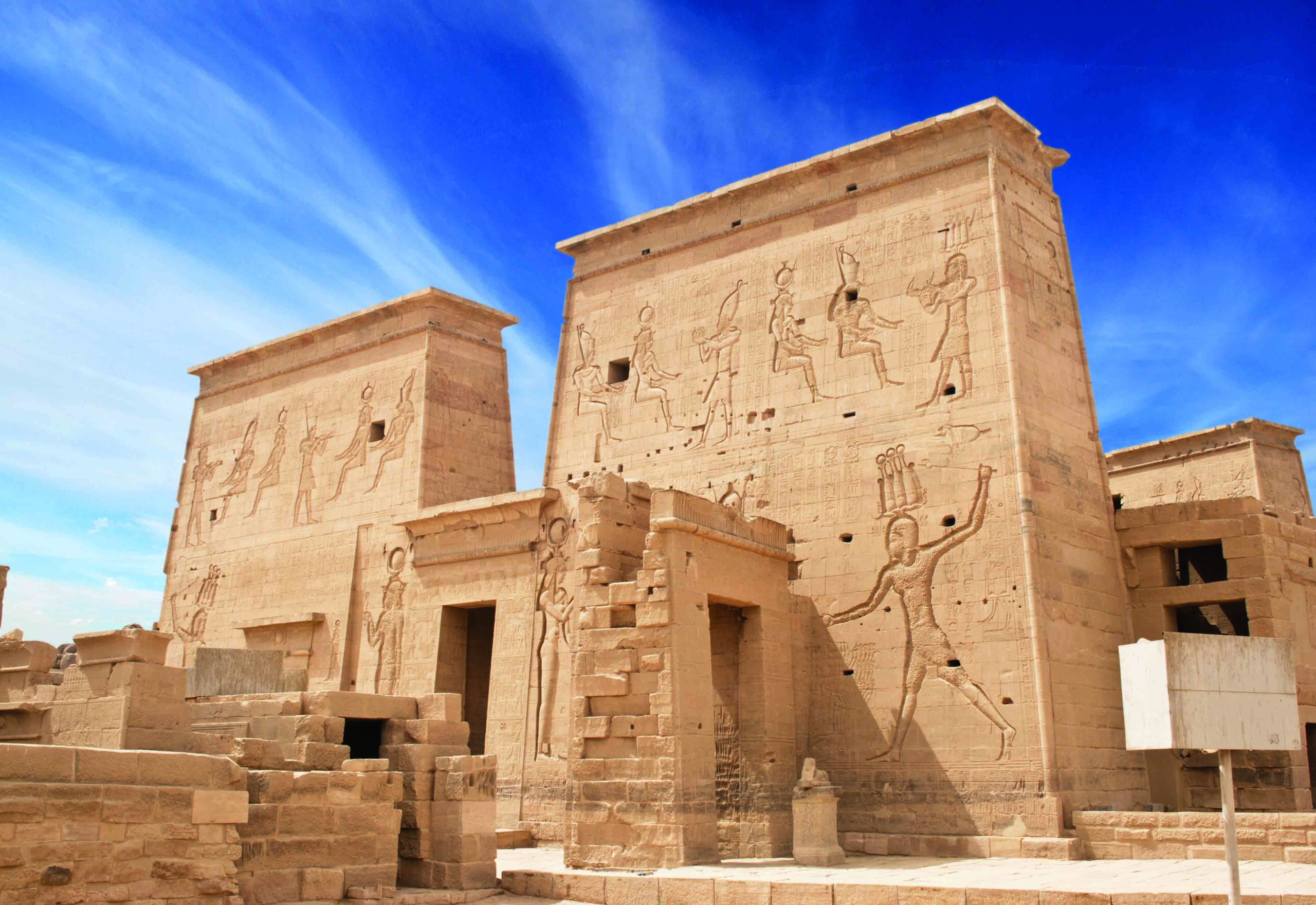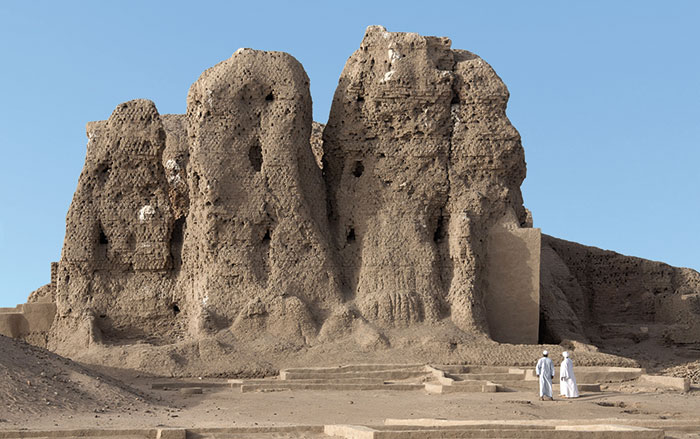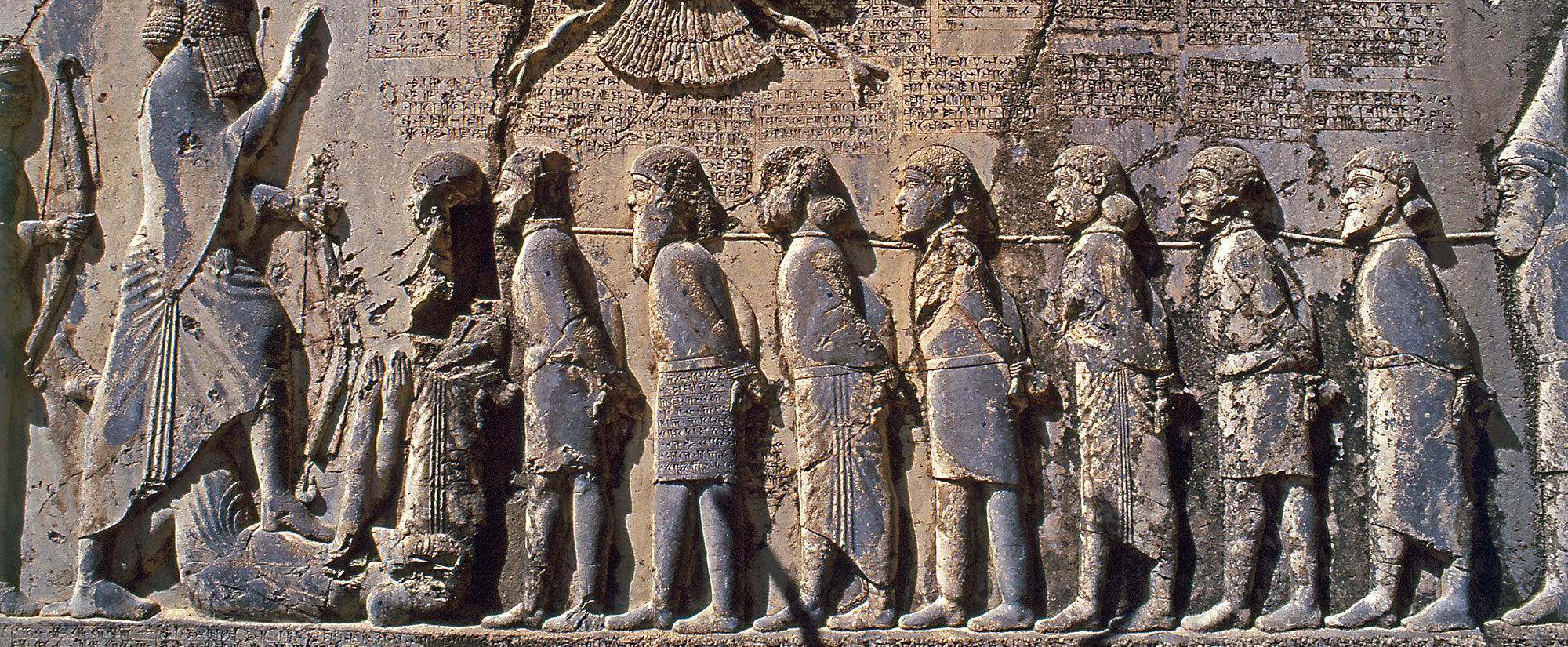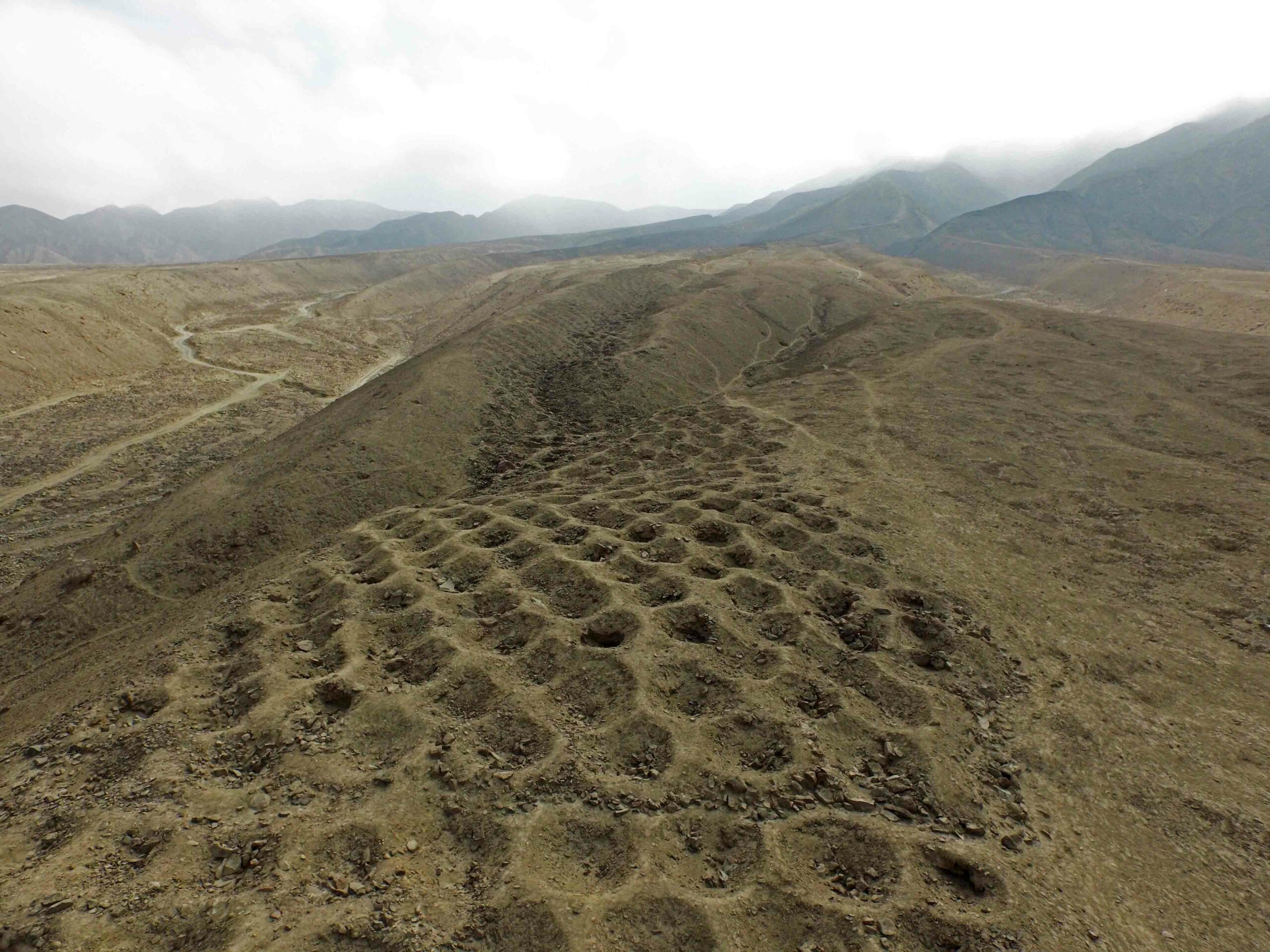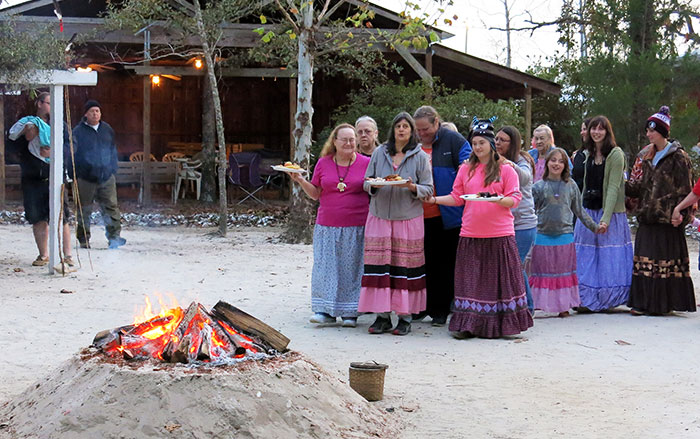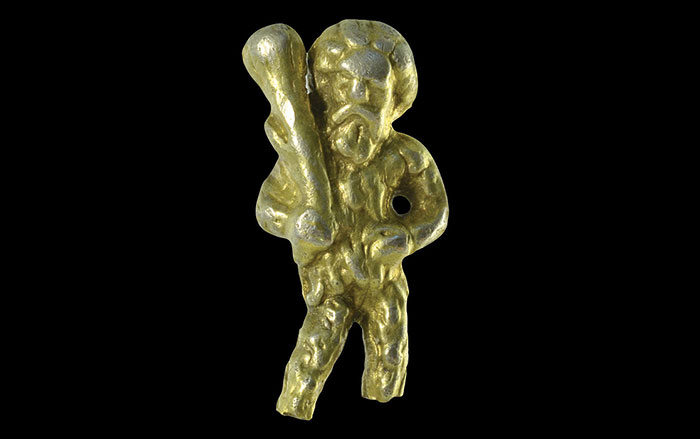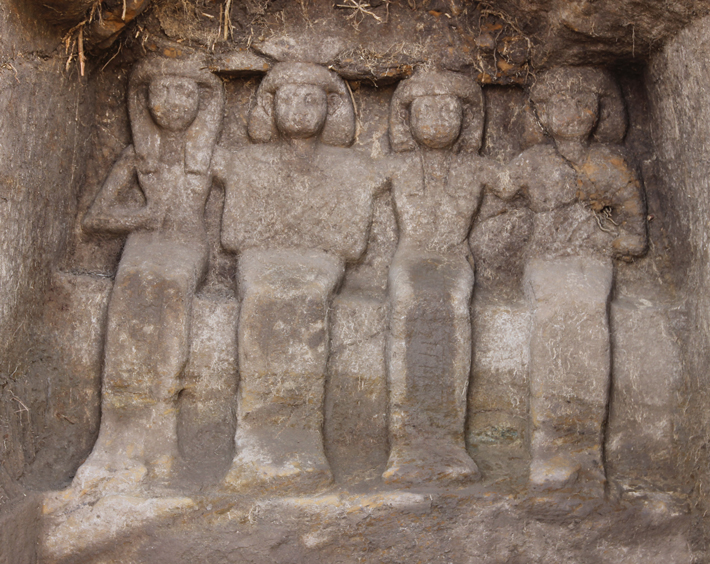
Two shrines at Gebel el-Silsila on the banks of the Nile River in southern Egypt—thought to have been completely destroyed by an earthquake and erosion—have been discovered largely intact. The shrines, located by a team from Lund University in Sweden led by Maria Nilsson, served as memorials to elite families. One includes statues of a man, his wife, and a son and daughter. Hieroglyphics identify the man as Neferkhewe, the “overseer of foreign lands” under pharaoh Thutmose III (r. 1479–1425 B.C.), and his wife as Ruiuresti. “The mother’s name is foreign and the part that we have of the daughter’s name is also foreign,” says John Ward, the project’s associate director. “So it looks as if we have a Nubian family who have taken on the Egyptian religion and produced this shrine in order to gain immortality.”


